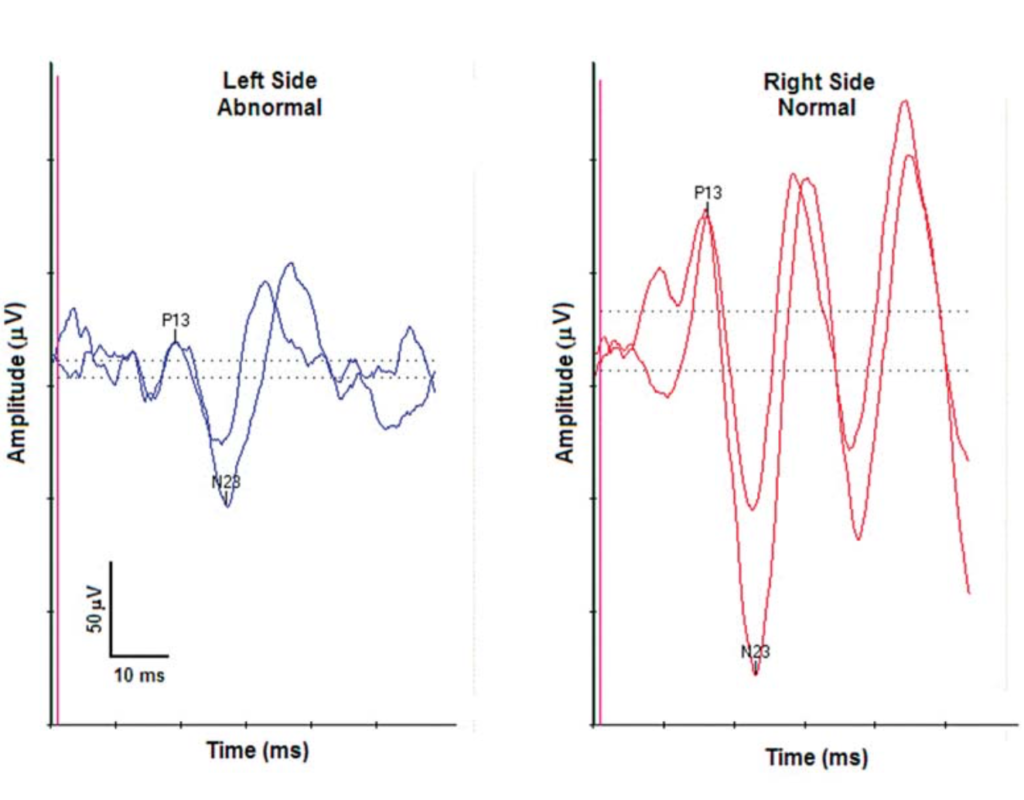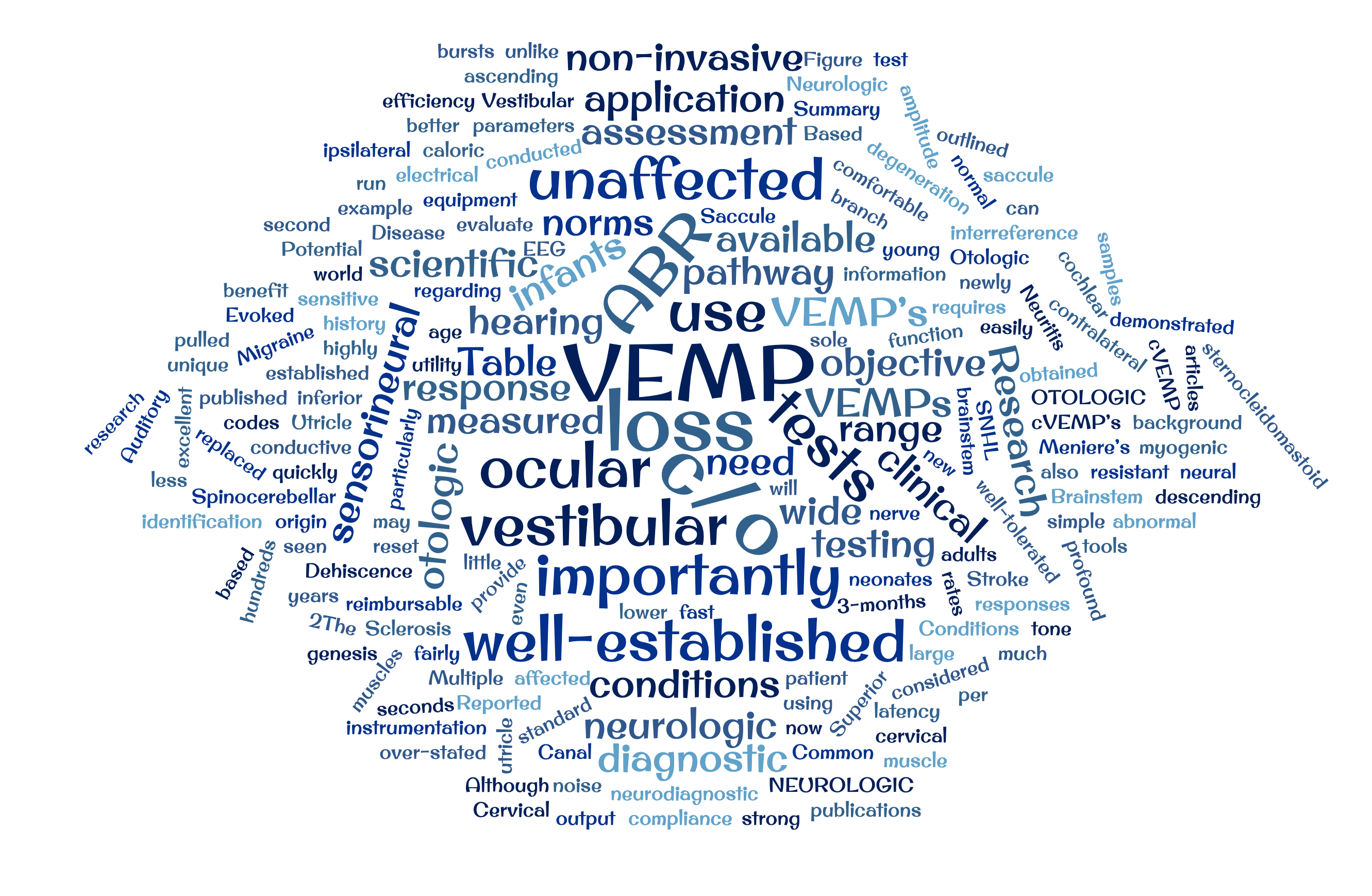NEW CPT Codes for Ocular and Cervical VEMP in 2021
By: Richard E. Gans, PhD – Founder & CEO American Institute of Balance
Effective January 1st, 2021, there are three (3) new CPT codes for Ocular and Cervical VEMP. Reimbursement amounts have been determined. The codes and reimbursement amounts were due to the collaboration between AAO-HNS, ASHA, AAN and the AAA. The codes and corresponding reimbursements in Florida are as follows:
| CPT CODE | DESCRIPTION | Maximum Medicare Allowable |
|---|---|---|
| 92517 | Cervical VEMP | $81.30 |
| 92518 | Ocular VEMP | $75.81 |
| 92519 | Combined C & O VEMP | $124.46 |
Historical Perspective
Cervical and ocular VEMP (c/o VEMP) testing is not new and has been well-established as highly sensitive tests with excellent diagnostic efficiency in hundreds of scientific research articles and publications for more than 30 years. In much of the world, the use of the c/o VEMP have replaced the use of caloric testing. They are simple, fast, non-invasive with well-established norms for amplitude and latency. An example of normal v. abnormal cVEMP is seen in Figure 1. More importantly, they are unaffected by sensorineural hearing loss, even profound cochlear loss.
Although the instrumentation is the same, unlike Auditory Evoked Potential (ABR), VEMPs are myogenic responses, so they are large, strong and fairly resistant to background noise or electrical interreference. The ocular VEMP’s origin is the utricle, is an ascending pathway and is considered an “on” response measured from the output of the contralateral ocular muscles. The cervical VEMP’s genesis is the saccule, is an “off” response with a descending neural pathway, measured at the ipsilateral sternocleidomastoid muscle. Because they are not being pulled out of an EEG as with ABR, they need less than 200 samples, and at 5 tone bursts per second, a test can be run in only 30-45 seconds. Research and clinical use have demonstrated that these diagnostic tools are unique in their application to better identification of a wide range of both otologic and neurologic conditions as outlined in Table 2.

Clinical Utility & Application
The benefit of the c/o VEMP assessment cannot be over-stated based on their application for a wide range of otologic and neurologic conditions. More importantly, they are objective tests with established norms, requires little patient compliance, are unaffected by SNHL (will be affected by conductive loss), are comfortable and well-tolerated, and may be conducted on infants as young as 3-months of age. It is the sole objective assessment of vestibular function available in neonates. More importantly, The VEMPs provide information regarding the Saccule, Utricle, and particularly for the cVEMP’s utility to evaluate the inferior branch of the vestibular nerve and lower brainstem which are not available with any other neurodiagnostic vestibular tests.
| OTOLOGIC | NEUROLOGIC |
|---|---|
| Meniere’s Disease | Migraine |
| Superior Canal Dehiscence | Spinocerebellar degeneration |
| Vestibular Neuritis | Multiple Sclerosis |
| Brainstem Stroke |
Summary
The c/o VEMP have a well-established scientific and clinical history. They are easily and quickly obtained on infants to adults using standard ABR equipment (need to reset parameters), are non-invasive and unaffected by sensorineural hearing loss. Based on the newly published codes and rates, they now are also reimbursable.
About Richard E. Gans, PhD

Founder and Executive Director of The American Institute of Balance, one of the largest balance centers in the USA Dr. Gans received his PhD from The Ohio State University in Auditory-Vestibular Physiology. For over 20 years has been a leader in the development of vestibular evaluation and rehabilitation techniques, including tests of oscillopsia and postural stability as well as BPPV treatment. He has presented or published over 150 programs and papers worldwide in the area of equilibrium disorders. He is the author of 8 textbook chapters and texts ranging from diagnostic vestibular testing, vestibular rehabilitation, BPPV treatments and pediatric vestibular evaluation. Thieme Medical Publishers will publish his upcoming textbook, Evaluation and Management of Balance Disorders in Children and Adults. His most current research is in the areas of pediatrics, migraine and psychiatric aspects of dizziness. Dr. Gans served as the President of the American Academy of Audiology (2004-2005) and continues to be active in professional and governmental issues. He is an adjunct professor at Nova Southeastern University and the University of South Florida.








